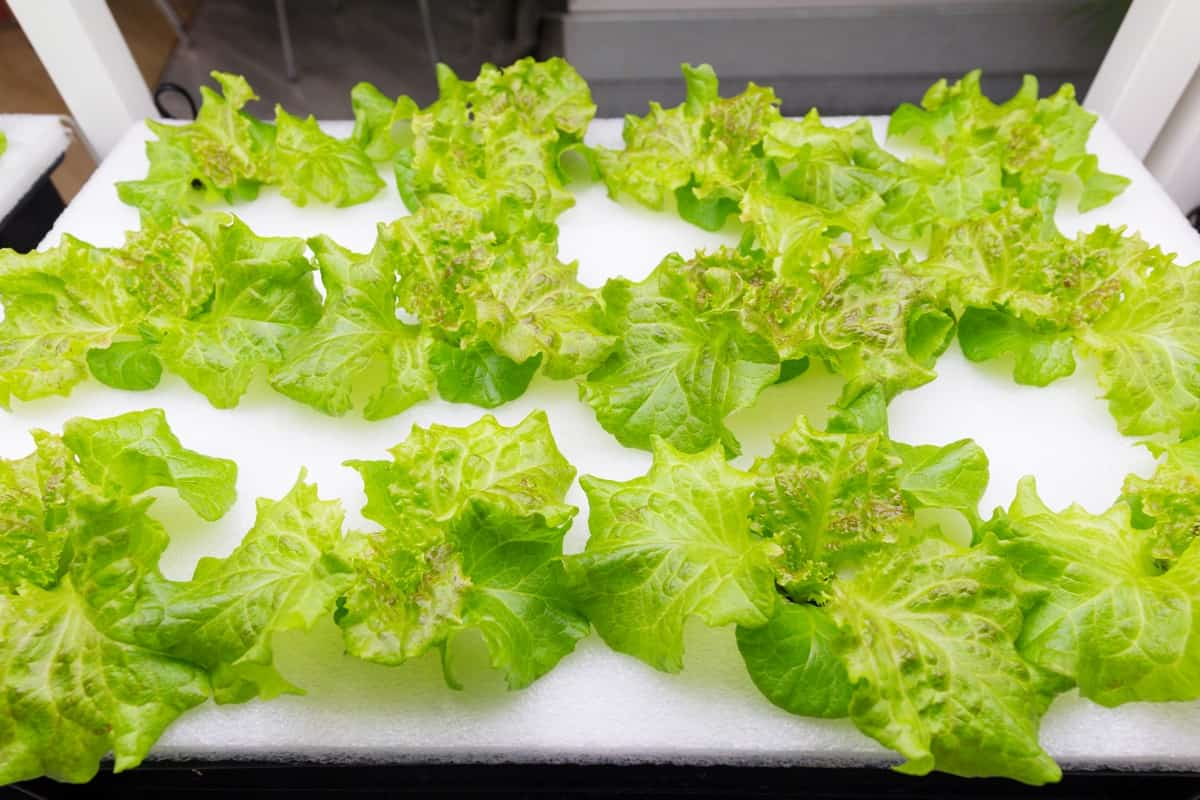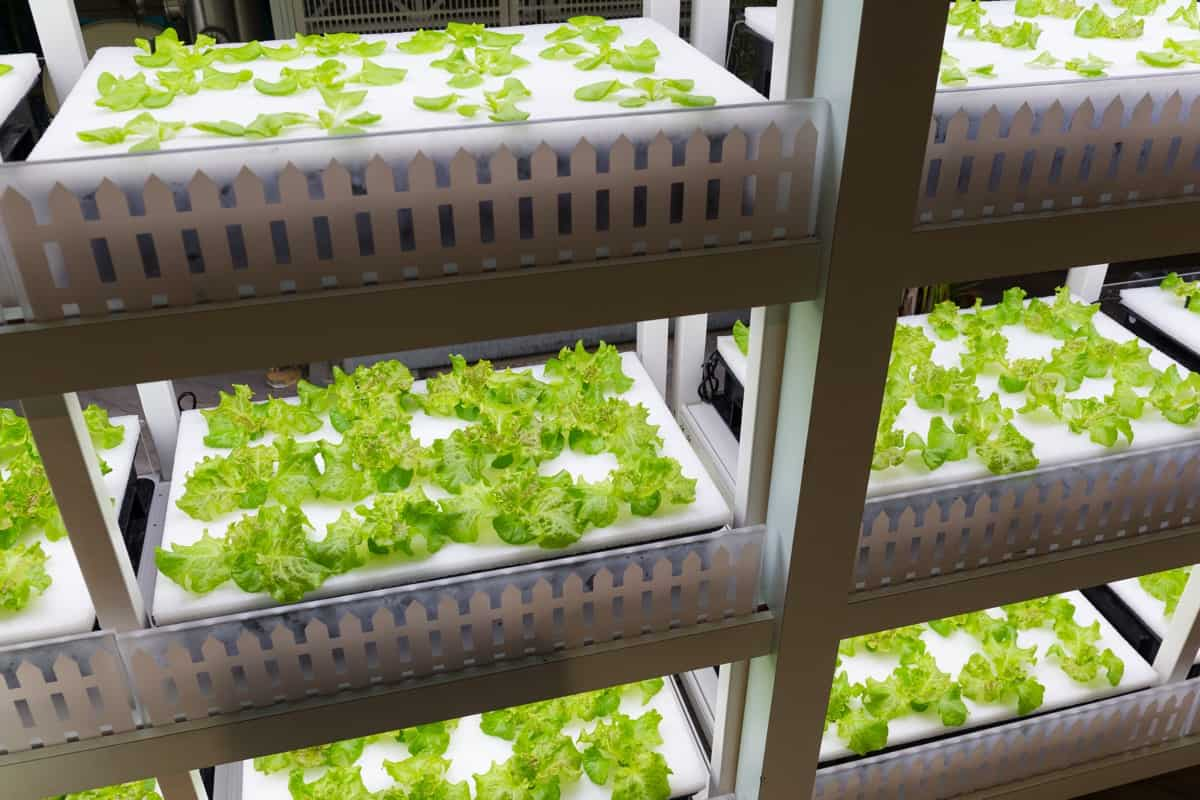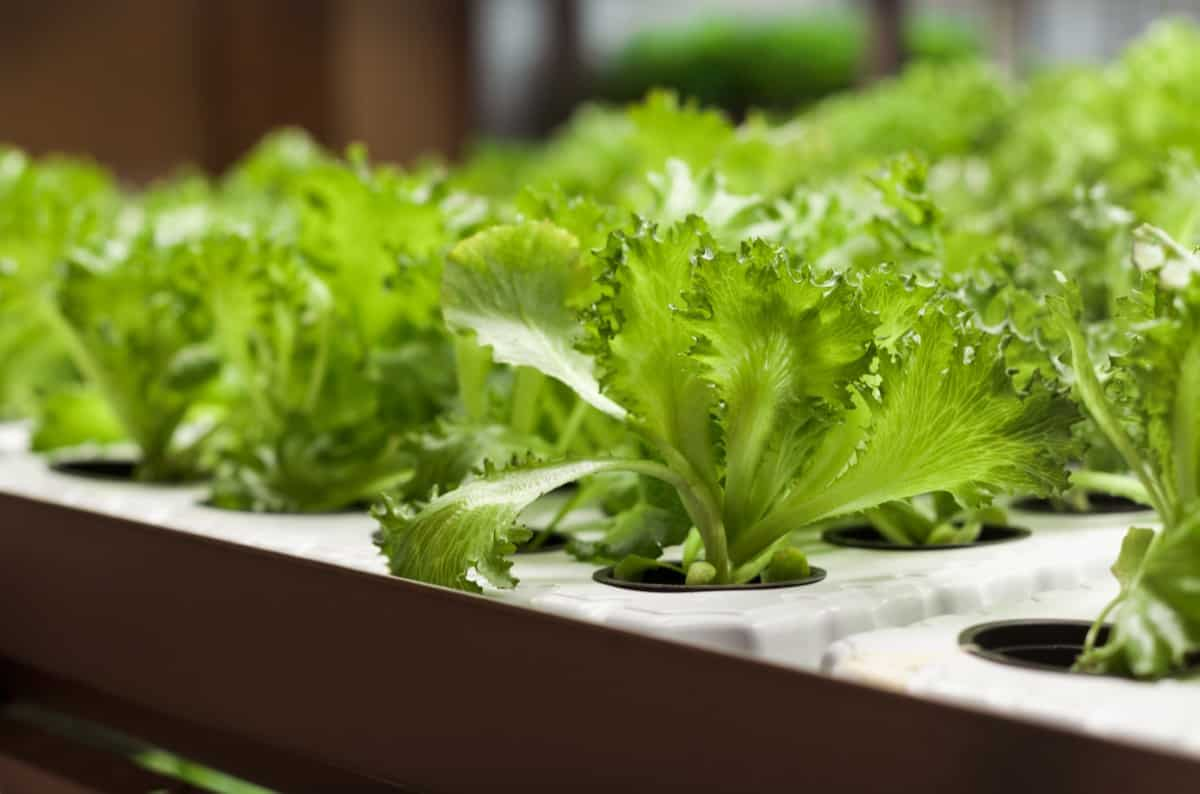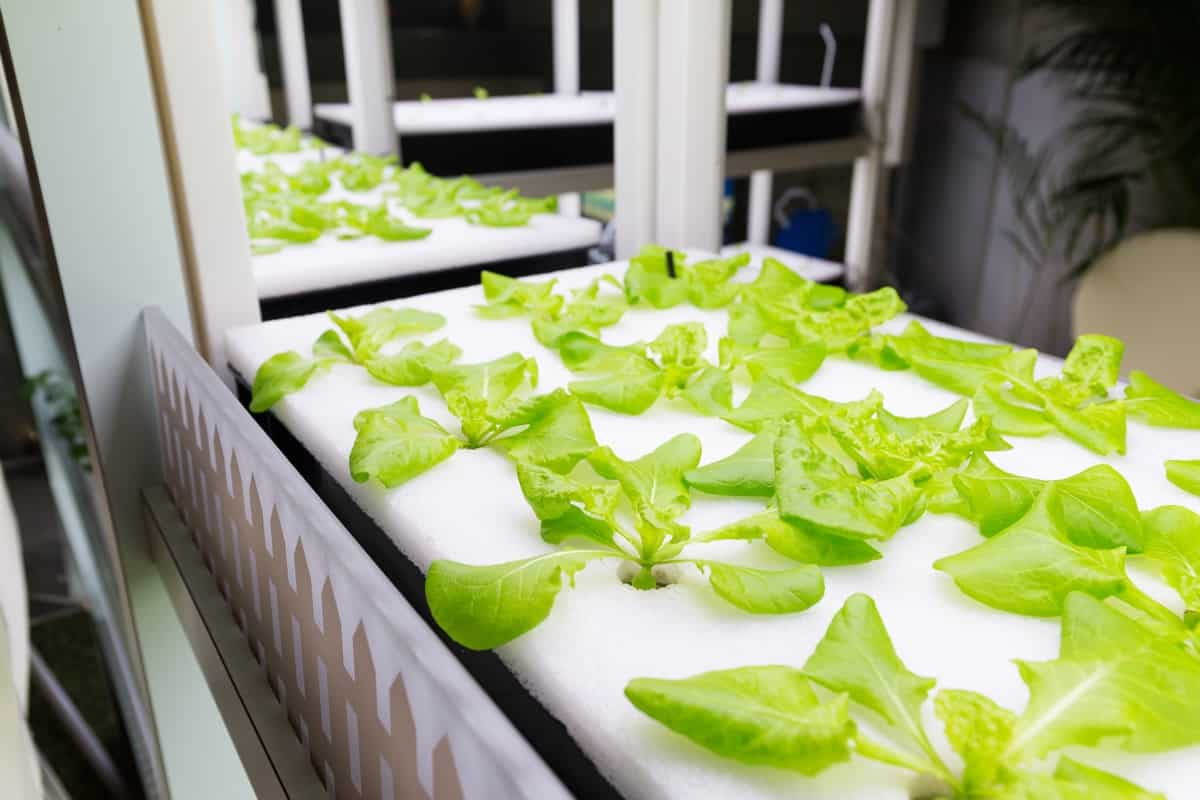Welcome to our comprehensive beginner’s DIY guide on hydroponic farming at home. In this blog, we aim to provide you with valuable insights and practical tips to embark on your hydroponic farming journey. Whether you’re a novice or have some gardening experience, this guide will equip you with the knowledge to set up your hydroponic system efficiently. Discover the benefits, learn about suitable hydroponic systems, nutrient selection, and prepare to grow your favorite vegetables and herbs indoors.

What is Hydroponic Farming?
Hydroponic gardening is a soilless method of cultivating plants using a water and nutrient solution. It offers several advantages over traditional soil gardening, including higher yields, space efficiency, reduced water usage, weed control, and the ability to grow plants indoors with artificial lighting. Hydroponic systems can be costly to set up, require a learning curve, demand regular monitoring for optimal performance, pose risks of waterborne diseases affecting plants, and expose vulnerable roots without a protective soil environment.
- Educate yourself about hydroponics by studying online resources or joining local gardening communities.
- Choose a hydroponic system based on your space, budget, and goals.
- Set up the necessary equipment, including containers, pumps, grow lights (if growing indoors), and a nutrient solution.
- Select the plants you want to grow and provide them with the proper care, monitoring water quality, pH levels, and nutrient concentrations.
- Regularly maintain and adjust the system as needed, ensuring optimal conditions for plant growth.
Hydroponic Farming Setup for Beginners
Hydroponic farming offers an efficient and space-saving way to grow plants without soil. For beginners, setting up a hydroponic system can seem daunting, but it can be done with the right guidance.
Choose the System: There are various types of hydroponic systems available, such as Deep Water Culture (DWC), Nutrient Film Technique (NFT), and Drip System. Each has advantages and considerations, so research and select the one that suits your needs.
In case you missed it: Hydrogen Peroxide for Plants – How to Use Hydrogen Peroxide in the Garden

Select a Growing Medium: Common growing mediums include rockwool, perlite, coconut coir, or clay pellets. These mediums provide stability and support for the plants while allowing water and nutrients to reach the roots.
Nutrient Solution: Plants in hydroponic systems rely on a nutrient solution to obtain essential elements. Pre-formulated nutrient solutions are available, or you can mix your own using water-soluble fertilizers. Maintain proper pH levels and monitor nutrient concentrations regularly.
Lighting: Adequate lighting is crucial for plant growth. LED grow lights are energy-efficient and suitable for indoor hydroponic setups. Consider the light intensity, spectrum, and duration for different growth stages.
Plant Selection: Choose plants that thrive in hydroponic environments, such as lettuce, herbs, tomatoes, and peppers. Start with easy-to-grow varieties for higher success rates.
Water and Air Circulation: Proper circulation prevents stagnation and helps deliver nutrients to the plants. Use air pumps and stones for oxygenation, and ensure constant water flow through the system.
How to Start a DIY Hydroponic Farming at Home
- Building a hydroponic setup doesn’t have to be expensive or space-consuming. You can create an easy-to-maintain hydroponic vegetable garden using PVC pipes and a water pump.
- Use UPVC or unplasticized polyvinyl chloride pipes and caps as cradles for your plants. Any pipe size will work as long as they are consistent and connectable to prevent leaks.
- Cut equidistant holes along the top end of the pipes for seedlings and plant growth. Mount the pipes on a wall using mounting brackets and screws.
- Start with tap water and add nutrient solutions available at garden stores or online retailers to create a viable growing solution. Different crops may require different nutrient mixtures, so do some research.
- Adjust the pH of the solution as needed using pH solutions. Regularly monitor water flow, amount, pH levels, and nutrient concentrations.
- Understand that hydroponic farming requires attention and monitoring. It may take time to learn how to make adjustments, but once plants start growing, it becomes easier. PVC setups allow for easy switching between different crops.
As an alternative, consider prebuilt hydroponic systems like those that Gardyn provides. These setups require no sunlight or waterline and can grow over 50 varieties of organic fruits, vegetables, herbs, and flowers in a compact space. Garden kits start at around $799 and include an integrated smartphone app for automated monitoring and control.
In case you missed it: When to Prune Hydrangea Varieties: A Step-By-Step Guide

Best Hydroponic Systems for Home Use
Wick System: Simplest hydroponic system with no moving parts or electrical components. Suitable for microgreens, herbs, and peppers but not ideal for water-hungry plants like lettuce or tomatoes.
Water Culture (Lettuce Raft) System: Easy-to-set-up system using a Styrofoam floating on nutrient-enriched water. Best for growing leaf lettuce but not recommended for long-lived plants like tomatoes.
Ebb and Flow System: Versatile system that floods the growing medium with a water-nutrient solution and drains it back into the reservoir. Provides control over watering frequency and duration. Suitable for a wide range of plants.
Nutrient Film Technique: Utilizes a continuous flow of water-nutrient solution that flows over plant roots in a sloping tray or channels. Ideal for fast-growing, shallow-rooted plants like lettuce, spinach, radishes, and herbs.
Aeroponic System: Advanced method where plant roots are suspended in air and misted with a water-nutrient solution. Requires sophisticated pumps and misters. Highly effective but requires careful monitoring to prevent root drying.
How to Choose the Right Hydroponic Nutrients in DIY Home
- Choosing the right hydroponic nutrients is crucial for your plants’ healthy growth and development. Nutrients are essential elements that plants require for various physiological functions.
- These include macronutrients like nitrogen, phosphorus, and potassium, and secondary nutrients like calcium (Ca), magnesium (Mg), and sulfur (S), and micronutrients like iron (Fe), manganese (Mn), zinc (Zn), copper (Cu), boron (B), and molybdenum (Mo).
- When selecting hydroponic nutrients, consider the specific needs of your plants at different growth stages. Vegetative growth requires a higher nitrogen-to-phosphorus ratio while flowering and fruiting stages require more phosphorus and potassium. Look for balanced nutrient formulations suitable for hydroponic systems, either in liquid or powdered form.
- Regularly monitor pH levels and adjust nutrient concentrations accordingly. Some nutrients may interact or compete with others, so maintain the appropriate balance.
In case you missed it: How to Grow and Care for Hydrangeas: A Beginners Guide to Planting to Harvesting

Hydroponic Farming Benefits and Drawbacks DIY
- Hydroponic farming offers several benefits compared to traditional soil farming. Firstly, it allows for increased yields as plants receive optimal conditions for growth. Additionally, hydroponics is highly water-efficient, using up to 90% less water due to its recirculation system.
- The precise control over nutrient solutions in hydroponics ensures that plants receive optimal nutrition, resulting in healthier and faster growth. Furthermore, hydroponics is space-efficient, making it suitable for urban environments where land is limited.
- However, there are some drawbacks to consider. Setting up a hydroponic system can be initially expensive due to equipment, infrastructure, and nutrient solution costs.
- Hydroponic farming also requires technical knowledge to understand the system’s mechanics, nutrient requirements, and environmental factors.
- Regular monitoring and maintenance are essential to maintain proper nutrient levels, pH balance, and system functionality. Moreover, the risk of system failures, such as malfunctions or power outages, can impact plant health if not addressed promptly.
Hydroponic System DIY Designs and Plans
- Nutrient Film Technique (NFT): In NFT systems, a thin film of nutrient-rich water flows over the roots of the plants, providing them with the necessary nutrients.
- Deep Water Culture (DWC): DWC systems involve suspending the plant roots in a nutrient solution with an air pump providing oxygen. This design is simple and effective.
- Drip System: Drip systems deliver nutrient solutions through tubes and emitters to individual plant roots, ensuring precise and controlled irrigation.
- Aeroponics: Aeroponic systems mist the plant roots with a nutrient solution, allowing for high oxygen availability and efficient nutrient absorption.
- Vertical Tower Systems: Vertical towers utilize stacked layers of growing channels, maximizing space and allowing for large-scale production in limited areas.
Hydroponic Farming Tips and Tricks for Growing Vegetables
- Lighting: Provide at least 6 hours of sunlight daily, preferably 12 to 16 hours, using high-intensity discharge light fixtures. Halide bulbs are ideal for vegetative growth, while T5 fluorescent lights are suitable for short-growth cycle plants and cuttings.
- Temperature: Maintain temperatures between 68 and 70 degrees Fahrenheit to stop the root rot and stunted growth that high temperatures can cause.
- Humidity: Aim for 40 to 60 percent relative humidity to avoid fungal issues like powdery mildew. Use humidifiers or dehumidifiers as needed.
- Carbon Dioxide: Ensure proper airflow in the grow room to supply plants with ample carbon dioxide, promoting faster growth. Fans or air circulation equipment can help improve airflow.
- Water Quality: Filter high-mineral content water for effective nutrient dissolution.
- pH Level: Maintain a pH level between 5.8 and 6.2 for the water in your hydroponic system. Adjust pH if necessary using appropriate chemicals.
- Nutrients: Use hydroponic-specific fertilizers containing macronutrients (nitrogen, potassium, phosphorus, calcium, magnesium) and micronutrients (iron, manganese, boron, zinc, copper, molybdenum, chlorine).
In case you missed it: Growing Parsley Hydroponically – Nutrients

How to Make a DWC Hydroponic System at Home
Creating a DWC (Deep Water Culture) hydroponic system at home is a great way to grow plants without soil. In this system, plant roots are suspended in a nutrient-rich water solution, promoting healthy growth. To make your own DWC system, you’ll need a suitable container, net pots, an air pump with an air stone, nutrient solutions, pH-adjusting tools, and basic drilling equipment.
By following a few simple steps, such as drilling holes in the container lid, assembling the air pump, filling the reservoir with water and nutrients, and adding plants to net pots, you can set up an effective DWC hydroponic system for growing various crops in your own home.
Materials Needed for DWC Hydroponic System at Home
| Storage container or bucket | pH meter |
| Net pots | Measuring beaker |
| Air pump with air stone | Pipettes |
| Hard Water Liquid Nutrients (A & B) | Hole saw with arbor |
| pH Down | Drill |
Method for DWC Hydroponic System at Home
- Find a suitable container and ensure it is lightproof to prevent algae growth. Deeper containers provide more stable nutrient solutions.
- Drill holes into the pipes of the container for net pots to sit. Use a hole saw and plan the hole placement carefully.
- Assemble the air pump outside the reservoir, connect the air stone, and check the valve. Ensure the check valve faces the air stone and keep the pump above the water level.
- Fill the reservoir with water, leaving some space at the top. Add the hydroponic nutrients according to the instructions on the bottle. Adjust the pH using phosphoric acid (pH Down) to achieve a slightly acidic solution.
- Plug in the air pump, place the air stone in the reservoir, and secure the lid.
- Add plants to the net pots, using rockwool plugs or hydroton clay pellets as a medium.
Maintenance: Monitor the water level, ensuring it doesn’t drop too much, especially for young plants. Check and adjust the pH levels when topping up water. Clean the reservoir and replace the water every 14-21 days.
Additional Tips: Seeds can be directly sown into the DWC system using rockwool plugs. To prevent drying, experiment with growing herb cuttings using foam collars and plastic bottle covers.
Hydroponic Gardening Supplies and Equipment
Hydroponic gardening requires specific supplies and equipment to create an optimal growing environment. Essential items include a hydroponic system (such as DWC or NFT), grow lights (such as LED or HID), pH and EC meters to monitor nutrient levels, air pumps and air stones for oxygenation, a water reservoir, growing media (such as rockwool or coco coir), net pots, nutrient solutions, and timers. These supplies and equipment enable precise water, nutrients, and lighting control, ensuring healthy plant growth and maximum yields in hydroponic gardening systems.
In case you missed it: Hydroponic Training Courses in India: Online, Offline, Workshop, and Fee

Troubleshooting Common Hydroponic Farming Problems
Nutrient Imbalance: Monitor nutrient levels regularly to prevent deficiencies or excesses that can harm plant growth. Adjust nutrient solutions based on plant requirements and monitor pH levels to ensure optimal nutrient uptake.
pH Fluctuations: Fluctuating pH levels can impact nutrient availability. Using pH adjusters, maintain pH within the appropriate range for specific plants (usually between 5.8 and 6.5). Regularly test and adjust pH as needed.
Root Diseases: Prevent root diseases by maintaining proper water and air circulation, maintaining clean systems, and using sterilized growing mediums. Implement preventive measures like beneficial microbes or appropriate fungicides when necessary.
Temperature and Humidity: Extremes in temperature or humidity can stress plants. Maintain appropriate temperature and humidity levels based on plant requirements. Use fans, ventilation, and dehumidifiers to control these factors in your hydroponic setup.
Pest Infestation: Monitor plants regularly for signs of pests and immediately control infestations. Implement integrated pest management strategies such as using natural predators, sticky traps, or organic insecticides to manage pests effectively.
Hydroponic Farming Cost and Return on Investment
Initial Investment: The cost of setting up a hydroponic farming system varies based on size, complexity, and equipment used. It can range from a few hundred to several thousand dollars, including the cost of grow lights, pumps, nutrient solutions, and infrastructure.
Operational Costs: Hydroponic systems require regular expenses such as electricity for lighting and water pumps, nutrient solutions, and periodic maintenance. These costs should be factored into the overall budget.
Return on Investment: Hydroponic farming offers the potential for higher yields and faster plant growth compared to traditional farming methods. This can result in increased crop production and the opportunity for higher profits. However, the actual return on investment depends on various factors such as crop selection, market demand, and efficiency of operations.
Cost Savings: While initial investment and operational costs may be higher in hydroponic farming, there can be cost savings in areas like water usage, land space, and pesticide/fertilizer usage.
Economic Viability: The economic viability of hydroponic farming depends on factors like market demand for hydroponic produce, crop selection, local pricing, and competition.
Conclusion
Hydroponic farming at home provides an efficient and space-saving way to grow plants without soil. With the right knowledge and equipment, beginners can successfully set up their hydroponic systems and enjoy the benefits of fresh, homegrown produce.
- Broccoli Seed Germination and Selection
- Asparagus Seed Germination and Variety Selection
- Seasonal Flower Gardening: Best Practices for Spring, Summer, Fall, and Winter
- How to Grow Hibiscus from Flower
- Plantation Ideas for Home Decoration: A Beginners Guide
- Flower Garden Designs and Layouts for Beginners
- Planting and Spacing Techniques in Papaya: A Beginner’s Guide
- Growing Gold: Essential Techniques for Planting Pineapples
- How to Make Kalanchoe Plant Bushy: Home Remedies and Solutions
- 11 Reasons Why Your Gardenia is Not Blooming: Home Remedies and Solutions
- Eco Elegance: The Guide to Designing a Drought-Tolerant Landscape
- Gardening on a Slope: Strategies for Hillside Landscaping
- Nourish and Flourish: Top Organic Mulches for Thriving House Plants
- Everything You Want to Know about Indian Mogra Flower: Discover Uses and Growing
- Green Thumb Success: Expert Tips for Cultivating Greenhouse Pumpkins All Year Round
- Maximize Growth & Flavor: The Ultimate Guide to Companion Planting in Herb Gardens
- How to Control Rhododendron Problems Naturally: Home Remedies and Organic Ways to Fix Them
- Natural Magic: The Remarkable Benefits of Cinnamon for Plants
- Best Steps to Revive Dying Tulip with Natural and Organic Treatment
- 10 Reasons Why Your Angel Trumpet is Not Blooming: Remedies and Treatment
- How to Fix Periwinkle Leaf and Flower-Related Problems: Natural Remedies and Solutions
- How to Fix Zinnias Leaf and Flower Problems: Discover Natural and Home Remedies
- Organic Steps to Induce Lemon Tree Flowers: A Comprehensive Guide
- Bloom Booster: Crafting the Perfect Homemade Bougainvillea Fertilizer
- Optimizing Growth: A Guide to Applying NPK Fertilizer for Potted Plants
- 10 Best Homemade Fertilizers for Rubber Plant: DIY Recipes and Application Method
- How to Boost Female Pumpkin Flowers: Effective Steps for More Flowers and High Yields
- Transform Your Indoor Garden: Top Benefits of Pink Salt for Houseplants
- 10 Best Homemade Fertilizers for Peacock Plants (Calathea): Easy DIY Guide
- Unlock Blooms: 9 Reasons Why Your Potted Chrysanthemum is Not Blooming
- 8 Reasons Why Your Potted Hibiscus is Not Blooming: Fix it with Simple Solutions
- Unlock Blooms: 9 Key Reasons Your Potted Frangipani Won’t Flower
- 10 Reasons Why Is My Ice Plant Not Blooming: Remedies and Treatment
- 10 Reasons Why My Potted Hydrangea Not Blooming: Treatment and Remedies
- 10 Reasons Why is My Wisteria Not Blooming: Remedies and Treatment
- 10 Reasons Why is My Goldfish Plant Not Blooming: Remedies and Treatment